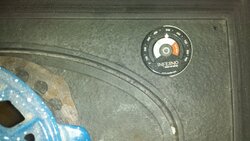xman23
Minister of Fire
Put it back together correctly. Safety first.
Since your final assembly of the stove is all from the inside, my choice would be not to remove the top. If you remove the top, you have to reattach it anyway. My procedure would be as follows:
Assuming the heat resistant board, blanket, the 3 tubes and all 4 manifold parts are removed from the stove. It is all best done clean and empty.
1. Attach and seat both LEFT and RIGHT side upper manifold halfs. Tighten upper bolts fully and seat it carefully.
2. Place and position the board and blanket above the upper manifold halfs. Together they control draft to the flue.
3. Attach RIGHT side lower manifold half with the 2 bolts. Leave bolts loose by about one turn.
4. Insert the 3 tubes in the RIGHT side manifold. Note: The "small" air hole tube goes in the rear. Place all tubes with the special "point" locating hole on LEFT side. Examine each tube carefully before you place it.
5. Slowly insert and lift the left side, lower manifold half, first with the rear tube, then the middle tube, and finally the front tube. It is tricky, but makes sense. Start by the rear, middle and then front tube as you hold up the lower manifold half. Tighten two LEFT side bolts to hold the manifold together. Then finally tighten all four (4) of the the lower manifold bolts.
6. Perfect time to empty all ashes and clean your glass.
It all goes together quite simply. Since this is your first time, I'll estimate that 1 to 2 hours would be required. Take your time and be thorough with each step.
Valhalla, thanks for the detailed description of removing the secondary burn tubes in the Oslo. I've been wanting to clean them since my stove was new in 2000. I don't know if anything in the design has changed since then, but I thought mine had two hex head bolts on the bottom half, which I thought held them together and screwed into the top. My fear was they would be frozen and snap off if I tried removing them. I don't recall alan screws, but they may be there. How free were yours?
My Oslo has the cast iron burn plates. They haven't warped as others here have had happen. I don't need to run it hard and I have maintained the insulation blanket. The blankets get torn up every few years. The first one I got was from Jotul for $45. I found the exact material and bought a roll that I cut a new one every couple of years. The blanket is to keep the fire box hotter, but I believe it keeps the burn plate evenly heated.




